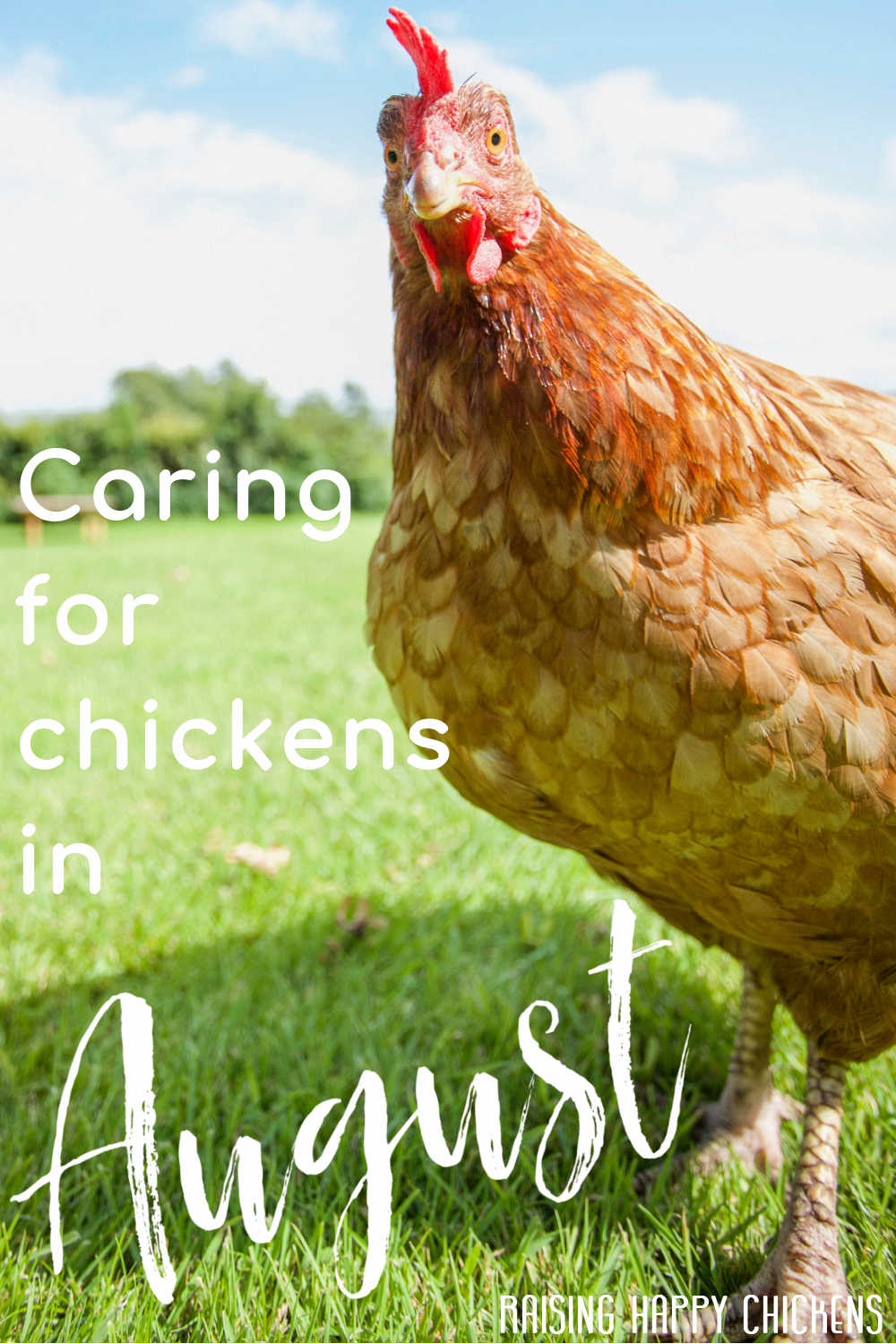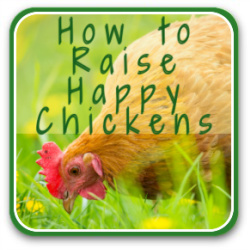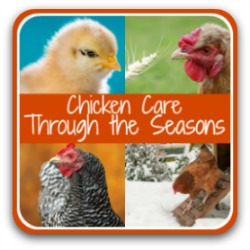- Home
- Monthly care
- August
Raising chickens in August: 20 tasks for a healthy, happy coop.
Are you in my newsletter group? If so, you'll be able to download your handy downloadable checklist for this month's tasks from the newsletter digest which comes to you in the first week of each month.
If you're not in my newsletter group, why not join? You won't find the free checklist anywhere else. Click here for more information.
It's August: the height of the summer.
Temperatures tend to be hottest this month before they start to drop as we move into early autumn.
And because chickens don't deal well with heat, that's where this month's focus should be.
It's also the month when many people choose to go on vacation. Is that even possible when you have a flock of chickens? You'll find out, later in this article.
Let's get started on this month's tasks, so we can make sure they're completed before August is out.
Choose those which obviously apply to your situation and tackle one a day so that they're completed long before the end of the month.
Links in this article are "affiliate links", which means that if you click and buy something, I earn a small commission at no extra cost to you.
1. Watch out for heatstroke in your flock.
Chickens struggle in the heat, and temperatures worldwide are increasing. August in Italy, for example, often reaches 45°C (113°F) for weeks at a time. In that kind of climate, chickens will start to suffer.
It's so important that you're able to recognise, and act upon, the signs of heat stroke in your chickens. To ignore them can result in the flock very quickly dying of heat exhaustion.
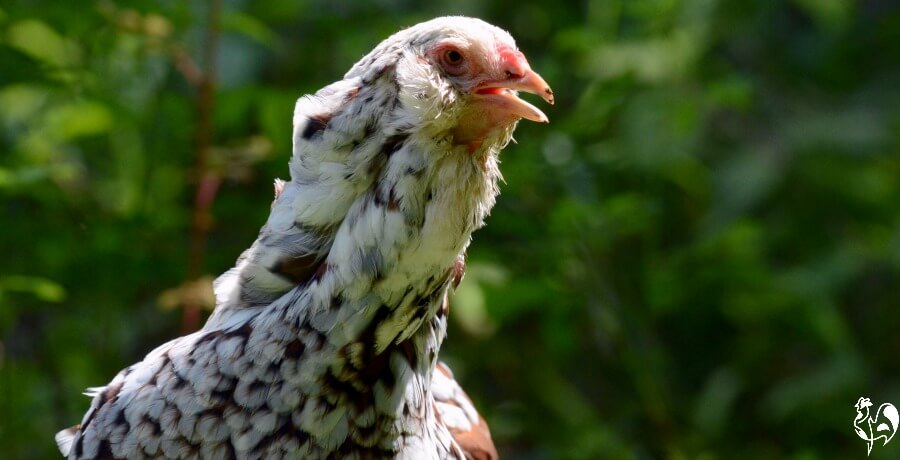 Did you know that panting is a sure sign of heat exhaustion in chickens?
Did you know that panting is a sure sign of heat exhaustion in chickens?What to do.
1. Take a look at this article and familiarise yourself with the signs of heat exhaustion in poultry.
2. Water is the most critical element for your chickens now. Put several sources at different places in the run so the flock don't have to expend energy looking for it.
This article has more detailed information about water and your chickens, including advice about the best waterers.
3. Fruit is starting to ripen this month, so use it to keep your flock cool. Grate hard fruit like apples and pears to bring out the juicy sweetness. Or cut strawberries, raspberries, melon, watermelon and bananas into small-ish pieces and freeze for a couple of hours.
It will be semi-frozen, which is cool enough to help their temperature and soft enough to help keep them hydrated at the same time.
4. If a chicken is clearly struggling – panting, listless, pale comb, dull eyes – fill a bowl with two or three inches of cool (not cold) water and stand the bird in it. Don't ice the water – it will be too much of a shock.
Chickens are not water fowl, so initially she may not like it. But after a few minutes she'll feel the coolness and will enjoy just standing in it until her temperature reduces.
Never leave your chickens alone in water. Make sure you supervise them. It's all too easy for them to drown.
2. Harvest those sunflower seeds!
Many common flowering plants (and weeds!) can be harvested at this time of year to add a boost to chicken diets. Find a summary of them in this short video.
If you've been following this series of raising chickens through the seasons, you may remember that we planted sunflower seeds in April.
Those plants have grown and developed all summer...
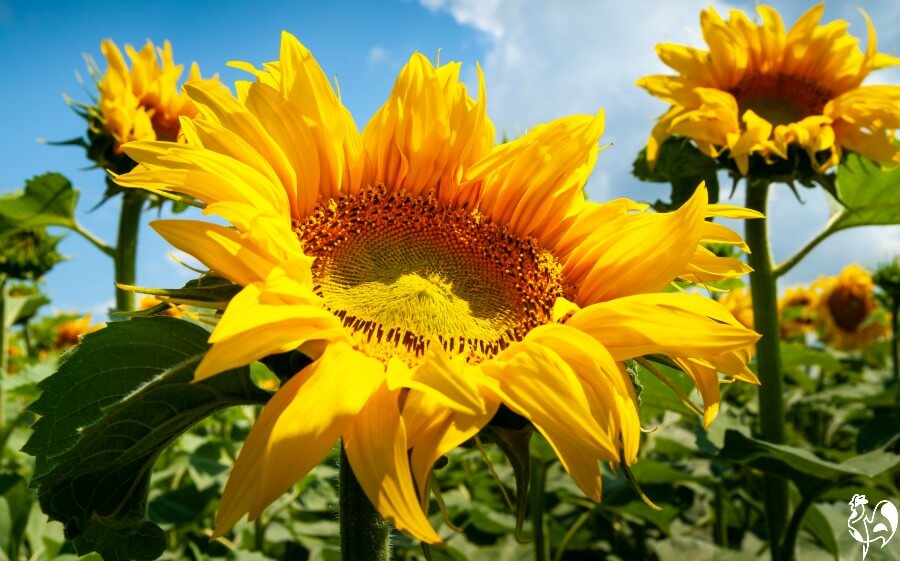 One of the iconic sights of summer in Italy - a field of sunflowers.
One of the iconic sights of summer in Italy - a field of sunflowers....and now, it's time to harvest.
What to do.
9. Wait until the plants are ready. The previously glorious yellow petals will have disappeared. The sun then burns the heads, which turn black with the emerging seeds. The increasing weight means they hang low on the plant.
They may look sad, but the bonus is a harvest packed with protein. It will keep your flock healthy as summer turns to autumn (fall) and the moulting season begins. It will also sustain them later, as autumn drifts into the cold of winter(1).
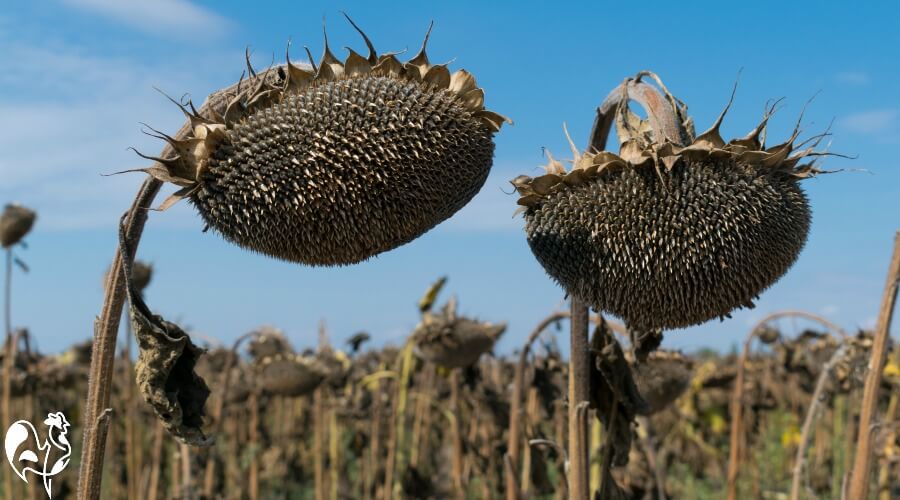 Harvest time in our sunflower field.
Harvest time in our sunflower field.10. Harvest by cutting the heads off the plant when they are completely black and the seeds are standing proud – you'll see them stick out of the head.
11. The easiest way of taking the seeds from the plant is by simply banging it onto a hard surface, or banging the head with a stick. The ripened seeds will fall out, ready for storage.
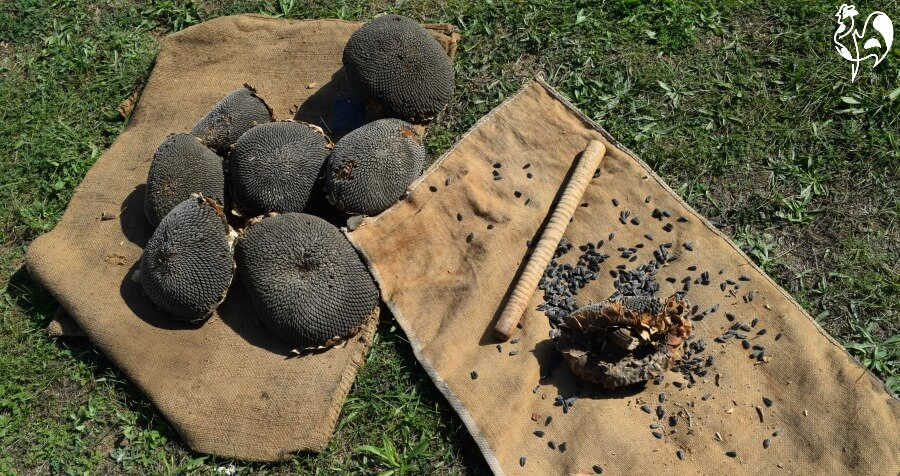
12. August is too early to feed sunflower seeds to your chickens. They do not need the extra protein at this time of year.
Keep the seeds at room temperature: they'll last for about three months. Storing in a fridge will prolong their life to around a year.
So store in a cool place like a pantry or, if you have room, in your fridge. Use an airtight glass container – sunflower seeds can absorb chemicals from plastic.
I find mason jars like these small enough not to take up too much room.
Want more information about choosing, planting and harvesting sunflowers? Take a look at my detailed sunflowers article.
3. Keep electrolytes at hand to beat summer heat.
The searing heat of summer can very quickly become a major problem for chickens, who are much better at dealing with cold than they are at dealing with sun.
Electrolytes are crucial in restoring the balance for a hen who's become overheated or distressed. Make sure you keep some to hand – they could save your chicken's life.
What to do.
5. Want to make your own electrolytes inexpensively, from items you're likely to have at home? Take a look at this article which goes into more detail about what electrolytes are, when and how to use them and how to make the home-made variety.
6. If you don't have the ingredients to hand and you're desperate, use a "power" drink like Gatorade until you can get some proper poultry electrolytes. Don't use this for longer than a day or too, though – the salt and sugar levels are too high for a chicken's system.
7. To save fussing with either of the above, keep a stock of electrolyte powder in your chicken first aid kit. It's a more expensive option, but you'll always be confident you've got some available when it's needed.
8. Using water and frozen treats are also important parts of heatstroke prevention and management. If you need to, refresh your memory with our June and July tasks, where we've already planned fairly extensively for dealing with heat.
4. Keep raising those veggies!
When the weather's still heating up and the summer vegetable garden is in full swing, it's hard to think about the autumn (fall) and winter days ahead when, along with your girls' eggs, vegetables will become less abundant and – gasp – you might even consider buying from local shops.
Veg can provide your flock with additional vitamins and minerals which will keep them healthy and happy over the colder months.
So now is the time to think about planting your late year veggie garden.
What to do.
13. Lettuces are a good all-year-round plant. As a bonus, your chickens will appreciate them later in the year when greenery is hard to come by. Plant now, let the flock have hours of fun with "kill the swinging lettuce (watch the video!)" later!
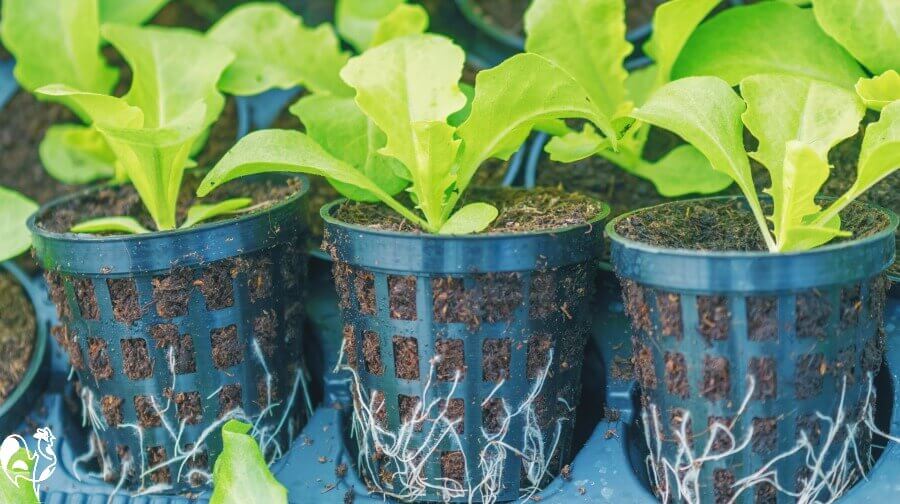 If your land is scorching, start lettuce seedlings in pots indoors to control watering. Plant out when they're well established.
If your land is scorching, start lettuce seedlings in pots indoors to control watering. Plant out when they're well established.14. Carrots and spinach can be planted in early August for an autumn harvest. Plant broccoli in the middle of the month and cauliflower as late as the end of the month, as long as the plot is sunny.
Grate the harder veggies for your chickens. I've tried hanging cauliflower or broccoli as with lettuce, but the chickens don't seem as keen to peck at harder, less digestible veg.
15. Mint is a very useful plant for keeping flies away from your coop. Take mint cuttings for overwintering indoors now.
Tip your existing plant from its pot and cut away a stretch of the white root. Cut into lengths a couple of inches long, place on top of a pot of compost and cover with a thin layer. Water, and wait for it to take. It will do best on a sunny windowsill.
16. Whatever you choose to plant, remember that newly sprouting seedlings don't do well in heat. Keep them in shade and make sure you water often – at least once a day when the sun is at its hottest. Watering in the early morning or evening is best.
Want a book about planning a chicken-friendly garden? See my review of 'Free Range Chicken Gardens'.
5. You can care for chickens in August and still take a break!
We all need one – a break from the everyday routine. Even if we love our family, our home, our animals, our work... The stresses can build up, and our energy gets depleted.
The problem with chickens or other livestock is that it can be hard to find someone who has the knowledge and patience to learn how to care for them while we're away.
But with a bit of planning, some helpful equipment and some simple explanations, you'll be able to take a break, whether it's for two days or two weeks.
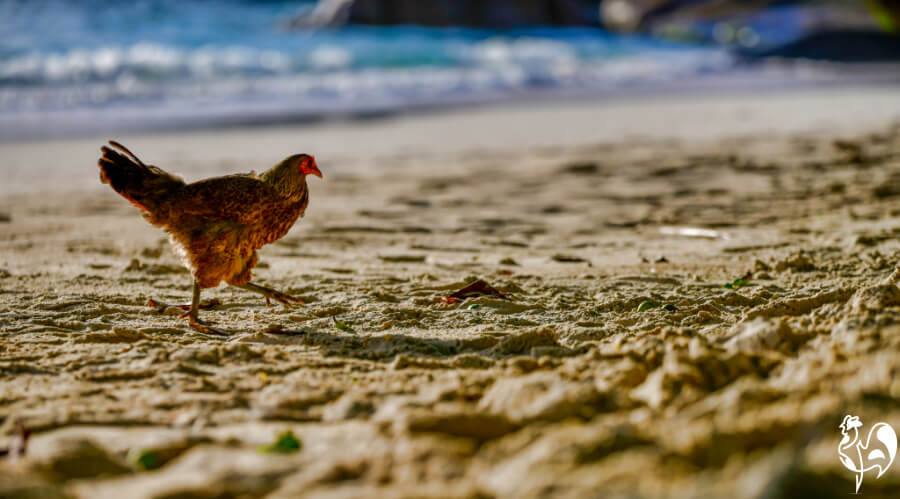 Even chickens need a vacation!
Even chickens need a vacation!What to do.
17. Take a look at this detailed article about how to make sure your chickens get the best care when you take a break. There's also a free downloadable checklist for you to leave with your chicken-sitters.
18. Having an automatic feeder is one of the most liberating pieces of equipment you can buy. Owning one means you can leave your flock for several days, safe in the knowledge that they will have access on demand to plenty of food.
It's also the single most important way of keeping vermin away and helping prevent wild birds, who can transmit disease like Bird Flu to your flock, from invading and infecting the run.
19. Take a decision about security. You may need to leave your chickens shut in their coop while you're gone. This has to be a personal judgement based on your circumstances. Some things to think about are...
- Will the flock all roost at night, or are there some stragglers your house-sitters may not be able to find and who will then be at risk?
- If you usually have a Livestock Guardian Dog who's going away with you, are there predators who will take advantage of the dog's absence?
You may not want to lock up your flock, and your chickens will certainly not appreciate it, particularly if they've been used to free-ranging.
But in the end, it may be the kindest thing to do.
20. Before you leave, make sure you walk whoever will be caring for your chickens through the daily tasks so that they are confident in what they'll be doing, and so they know where everything is.
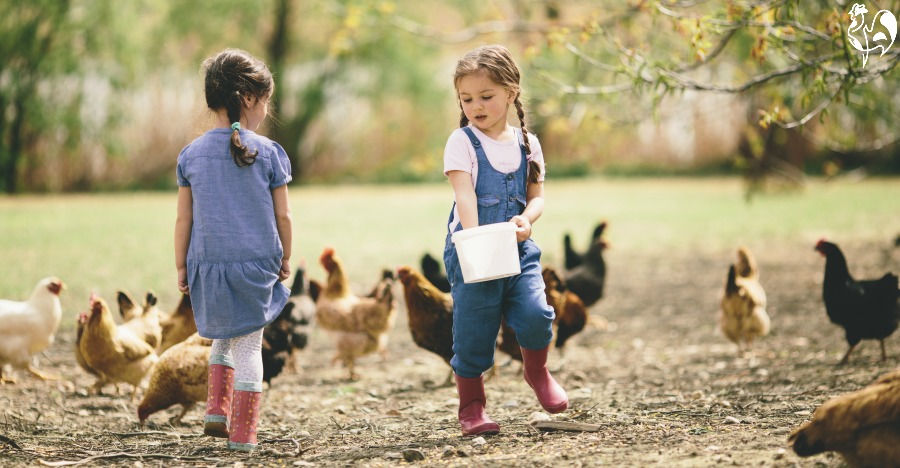 Make sure your chicken-sitters are confident they know what they need to do.
Make sure your chicken-sitters are confident they know what they need to do.Bonus tip for raising chickens in August!
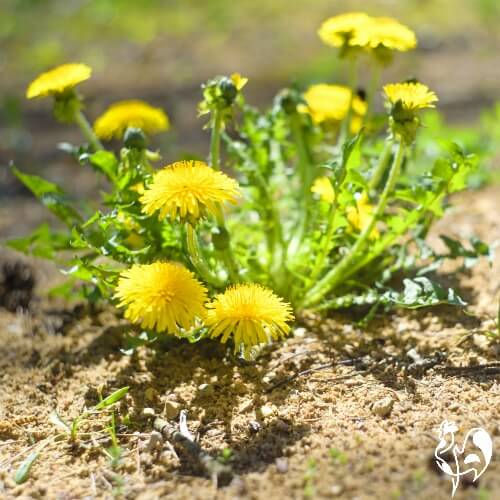 Let your dandelions run rampant!
Let your dandelions run rampant!Weeds are likely to be running rampant in your garden now. But did you know that some weeds can be very good as healthy treats for chickens? Find out which ones in this article.
One of the main examples is the humble dandelion. In Italy, dandelion plants are sold in garden centres because their benefits are widely known.
With almost no fat and an excellent source of Vitamins A, B, C and D, not to mention potassium, iron and calcium, they're excellent as a health aid for your flock(2).
So save your weeds and feed them to your chickens! They will probably only eat the young, less bitter leaves but the amount of calcium and vitamins they produce are well worth the digging!
And if you'd like my free e-book which looks at the advantages of dandelions (among other things), take a look at this page.
Enjoy the final days of summer with your chickens!
If you found this article helpful, you'll love these!
Sources.
A lot of "facts" you'll find on the internet are often people's individual views, based on inaccurate information repeated from poor quality sources.
The information I provide in this article and others is based not just on my own experience, but on evidenced facts from scientific, peer-reviewed research and books from highly respected and experienced poultry keepers such as Gail Damerow.
Some of the trusted sources I have used in this article are these.
1. Jacob, Dr J: Using sunflower seed in organic poultry diets. Pub. University of Kentucky, 2014.
2. Qureshi, S, et al: Histomorphological studies of broiler chicken fed diets supplemented with either raw or enzyme treated dandelion leaves and fenugreek seeds. Pub. Journal of Veterinary Medicine, 2012.
- Home
- Monthly care
- August
